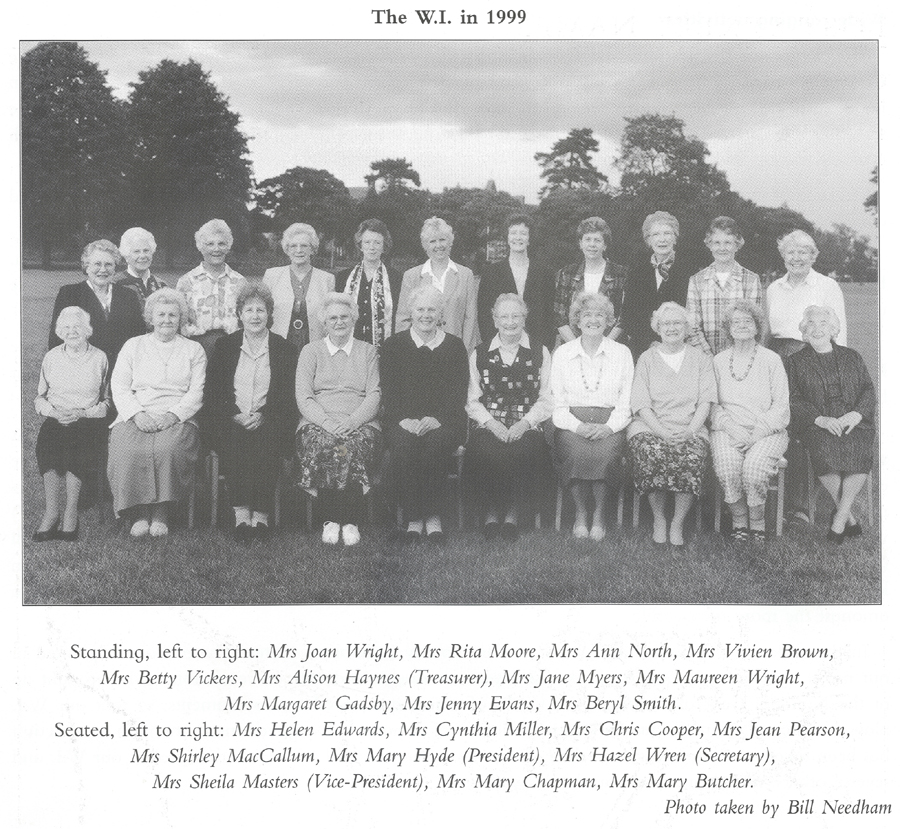Like most villages in England Nether Heyford sported the idyllic sight of twenty two people dressed in immaculate whites playing the age-old sport of Cricket on the Village Green.
A team game remarkably like cricket was being played in England as early as 1300 and by the 1700’s it was being played by the landed aristocracy and so became part of our culture. In the early 1890’s County Cricket was established with clubs being admitted only when the MCC judged their standard to be acceptable and the county of Northamptonshire was admitted in 1905.
The period 1890-1914 is regarded as the golden age of cricket with interest in the sport becoming widespread. Today it is not quite so popular with the young and it is not surprising that India and Pakistan have such magnificent teams as children take up cricket there as soon as they can hold a bat and at week-ends you can see teams and teams of players on any given space practising their skills -far more than even our local lads play football.
The tradition of a local cricket team still goes on in Heyford, but not on the Green. For the last few years you could see Julian Rice and his merry men playing on the well-tended sports ground by the Pavilion built ten years ago and situated just as you enter Heyford from the A45. (The Pavilion used to be the football changing rooms which were moved from the village green to the sports field). Still an idyllic sight but not the same perhaps as when cricket was played in the centre of the village.
The early years
The Cricket Club in Heyford was founded by Henry Isham Longden when he came to the village as Rector in 1897. He was, according to Joan Wake in her book ‘The life of Henry Isham Longden’, fond of cricket and apparently he had played for the Northampton Cricket Club in his curate days, so it is not surprising that he was always ready for a village cricket match. Hevford’s Bob Browning (1892-1997) recalls cricket being played on the green in the early 1900s, but these were in the days of friendlies against neighbouring villages.
There must have been a lapse of all activities during the 1914-1918 war with all able-bodied men fighting, but cricket resumed in the 1920’s. At this time the green was more uneven than it is today as it was grazed by cows. There was continual debate about whether a proper pitch could be laid. According to the rules laid down for the management of the green no digging could take place, and much argument went on about laying such a pitch. However agreement was eventually reached and a wicket turf was laid on the centre part of the green by Jack Nickolls and Tommy Kingston.
In the 1920’s the Heyford team consisted of such people as Bert Thompson, Frank Reeve, Bob Foster, Dick Foster and Ron Humphrey. They played friendlies against local villages, Farthingstone and Everdon. Before each match nets were erected along the far side of the green to protect the windows and slates of the houses nearby. And of course they all met afterwards in the clubroom of the Foresters Arms.
In the 1930’s the players included Bill Kingston, Bernard North, Charlie Copson, Jack Butcher, Dennis Clarke and Reg Collins. The main umpire for Heyford was Sonny Thompson and they played against Everdon, Pattishall, Astcote, Bugbrooke, Kislingbury and Harpole. Bill Kingston recalls that before they could play they had to make up the pitch. They had to fill in the holes, patch it, turf it and roll it because the cows had been on it all week! And according to Charlie Copson the pitch was so well prepared that it was used on Friday evenings for tennis matches.
Cricket as it appeared on the Green in the 1940’s and 1950’s
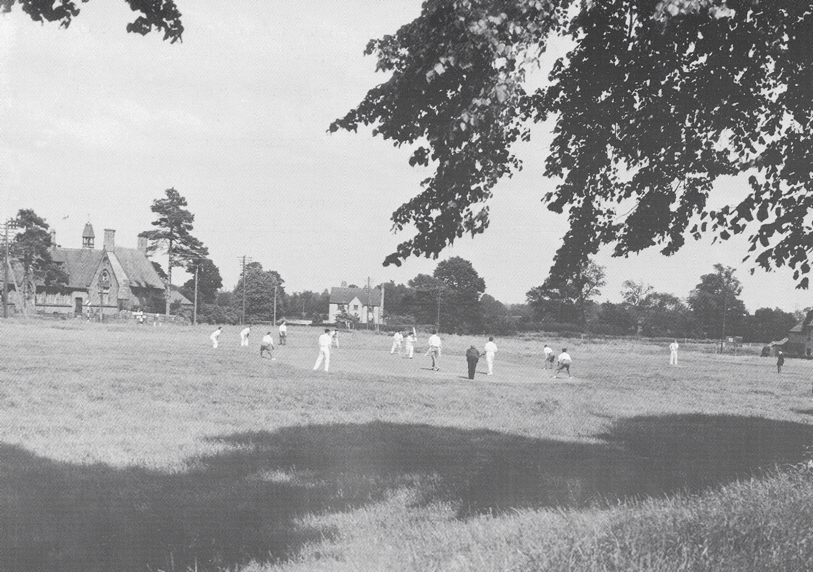
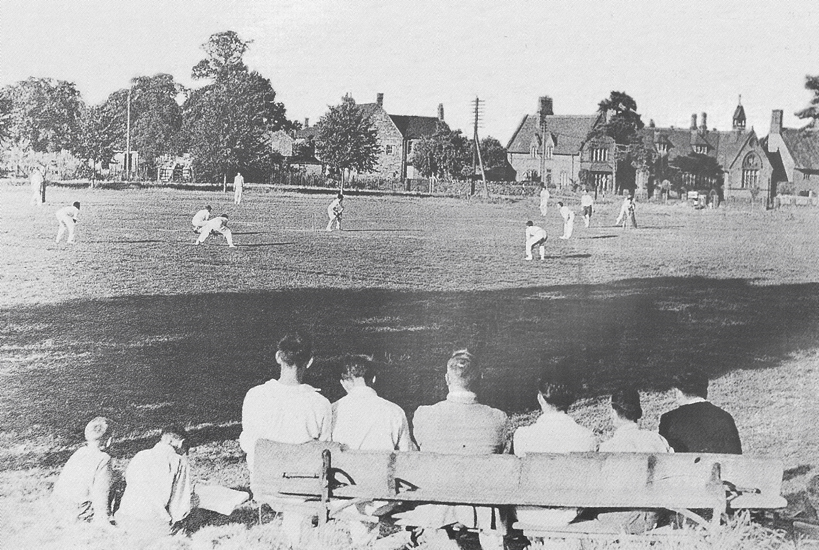
The team in the 1960’s
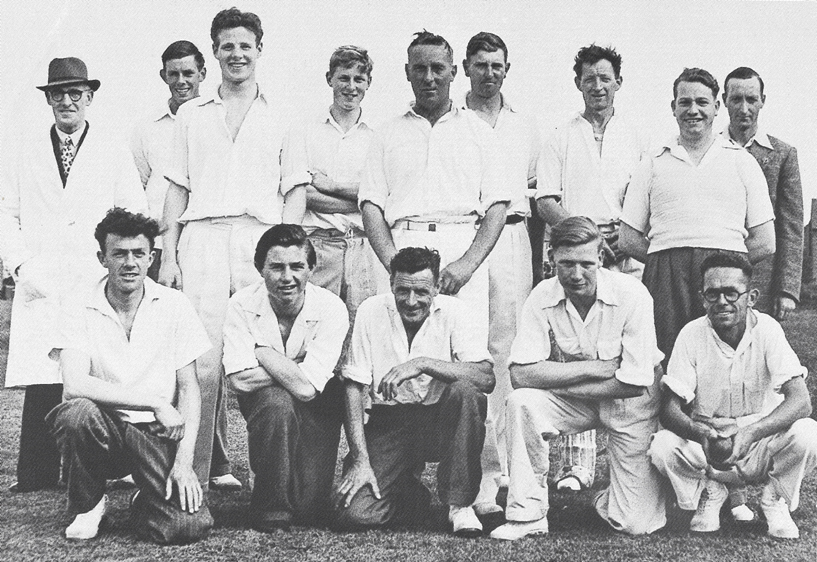
Standing, left to right: Jack Draper, Peter Brodie, John Draper, Michae Ingray, Norman Fonge, Bernard North, Ron Copson, Bert Thornicroft, Ben Spokes
Kneeling, left to right: Dennis Clarke, Jim Blood, Harry Haynes, Charlie King, Reg Collins
Twenty years without a club
Then the cricket ceased. In the Sunday Telegraph a few weeks before Easter 1999, it was reported “The village Cricket Club has been forced to close after the wives and friends of the players refused to make their teas”. This, I hasten to add, was not what happened to Heyford. By the 1950’s Tommy Rolfe had left the Foresters and houses had been built alongside the green between Middle Street and the Post Office, making it difficult to protect them against damage from the balls. Also there were few young men in the village in the post war years because many were moving to town to take advantage of modern work and housing opportunities.
In the Mercury & Herald November 6th 1969 a little piece about Nether Heyford appeared. “Heyford is developing fast with an attractive diversity of new and stylish housing running in price to the five figure bracket, but in the heart of the village the scene remains much the same as half century ago – thanks to the preservation of one of the most expansive village greens in England. It is a curious fact, however, that Nether Heyford has no cricket club. It used to have one but the young people have cars these days and go where they will for their sport and pleasure”.
The club reformed
However, on the 16th June 1977 a meeting was held with Charles King asking the question “Would it be possible to raise a cricket team in the village?” and no article about cricket in Nether Heyford would be complete without a mention of Dave Jenkinson who, after this initial meeting, was elected Chairman of the newly reformed Cricket Club with Charles King, who lived in Hillside Road, becoming the Secretary.
Charles told the local paper that when they had started up again they played half-a-dozen evening games with limited overs to test out the interest. But with no pitch and little equipment and the green being used all winter for football, it was becoming very difficult to keep interest going. He reported that “we’ve had talks with a local farmer about using one of his fields, but at the moment we’re playing all our matches away from home; we book pitches on places like the Racecourse in Northampton. But the real snag about a square on the green, is that we’d need to spend £160 on safety netting along the roadside”.
Thus a new venue for cricket was being called for. Plans for playing fields were being started and fund-raising events taking place. And an apt headline appeared in the paper: “Cricketers bat on and refuse to be stumped”.
Discos at the Foresters Arms followed and on December 23rd 1977 a Christmas Supper Dance was held, music by the Neal Stanton Band, and tickets at £2.50. At this time the membership fee of the Cricket Club was £1 a head and the match fees 10p per game. More and more local people became involved with the Club and Mrs. Rosemary Haddon was elected Treasurer having the grand sum of £155.4p in the kitty.
In 1978 on the 25th May the Mercury and Herald reported some memories from Mr. Albert Garrett who was clerk to the parish council for 35 years and at that time 79 years old. “We used to play cricket on the green” he said “they’ve just started the club up again. I played until I was 60” and he laughed. “We used to break a lot of windows but this time I think they’re getting something to protect them. Even so, we always had a collection to pay for them, especially for one old chap who had his broken regularly.”
And in 1982 when Dave Tite was secretary, the Club was looking back to 1977, the year that Heyford Cricket Club was reformed and remarking on how well the club was doing since it started without money, equipment or fixtures. In March 1983 Geoff Garrett was voted Captain and Paul Horrocks was persuaded to take on the job of fund raising- a difficult but necessary job in the circumstances. They had a full fixture list and entered for the Watney Mann Cup.
All matches ‘away’
In 1984 still without proper grounds the Cricket Club flourished, meetings were held still at The Foresters Arms with Mine Hosts Alf and Marg Parker and youngsters were being recruited. At the Parish Council Annual Meeting members raised the subject of their need for practice nets in the village, perhaps on the green, and these “would not take up a great deal of room and could be used by the School and would add to the attractions of the village”. If you look at the fixture list for July 1984 you will see that not one of the matches were played at home. And amusingly on the front of the fixture list you will see the following:
REMEMBER:
It is better to have played and lost than never to have played at all.
(Gayton excepted)
At the 7th AGM of the Heyford Cricket Club on Sunday, 31st March 1985, the Chairman reported sadly that there was now no prospect of home fixtures being played within the Parish Boundary but that it was to be hoped that progress on the Heyford Playing Fields project would mean a ray of hope for future seasons.
The following report in September in the Prattler went “Came second to Ryland 0/B’s in the Clenbury / Haine Shield. Lost in the final. Watney Mann Cup got through to the second round by having a bye in the preliminary round – and beating Gayton in the first round. Lost to Buqbrooke in the second round. We have started a Youth Team with the lads doing most of their own organising. They have been going for about six months and have had two fixtures against very good sides. They tied their first game against Wootton Youth and narrowly lost to Rylands Under 15’s. They have a practise net on the Green every Monday evening. The lads show a lot of promise and hopefully next season we call get them into a league through the Cricket Association. “
But it was to be some time before cricketers could enjoy the game on their home turf. An article appeared in February 1987 stating that “The Parish Council, through its Leisure and Amenities Committee, has been looking into the possibility of acquiring enough land to provide a playing field for the use of the inhabitants of both Nether and Upper Heyford. This matter was also discussed at the last Annual Parish Council meeting. A steering group has been formed to consider the matter, and the outcome of their enquiries to date is that Mr. J Spokes of Upton is prepared to sell approximately 10 acres of land, which seems to be ideally suited to a games area. The land forms part of a flat field, which is situated behind the allotments and Mrs. Smith’s field on the Upper Road.”
The team in 1980

This photograph, taken on Jeremy Rice’s front lawn, shows the team as proud winners in 1980 of the Clenberry / Haine Shield.
Standing: Julian Rice, Ray Haddon, Dave Tite, Tony Charville, G Starmer, Graham Drake
Seated: Alex Kirkbride, Geoff Garrett, Geoff Sturgess, Mike Tharby
Home turf at last
In July 1988 the cricket square was making good progress “thanks to the efforts of the Grounds Committee headed by Jeremy Rice.” And in 1989 Geoff Sturgess of Hillside Crescent was very encouraged by the good turnout for the Youth Cricket Under 16’s Team as nets were now available down on the Playing Field.
In the Prattler, May 1989, the following article appeared compiled by Alex Kirkbride:
“The merry click of bat against the ball, the expectant rush, the cheering that proclaims skill of the greatest of all English games; Flutter of the flags, the branches of the trees swaying beneath the summer breeze; No sweeter music in the world is found than that upon an English cricket ground.
R Ratcliffe Ellis; Cricket Music
Yes, the dream is now a reality. Heyford Cricket Club is back at home”.
And now in 1999 Simon Legge has taken over the captaincy from Julian Rice and will lead his team in League Cricket. The village Green has seen the very last of the cricket but thanks to all the efforts of the stalwarts of the village, the cricket heritage will continue.
With grateful thanks to Barbara Haynes, Julian Rice and Dave Tite
Julie Rands-Allen
~~
Extract from “The Story of Heyford” – Local book series published in the late 1990’s
Volume 4 of 4 | Chapter 5 of 8 | Pages 22 to 27

Heyford’s Historical Heritage | How the books were created
Index | Covers
52.219796
-1.033694
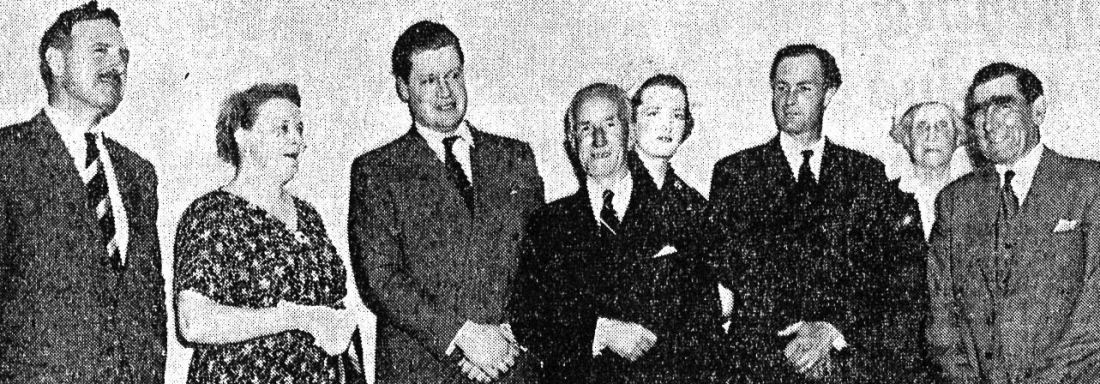

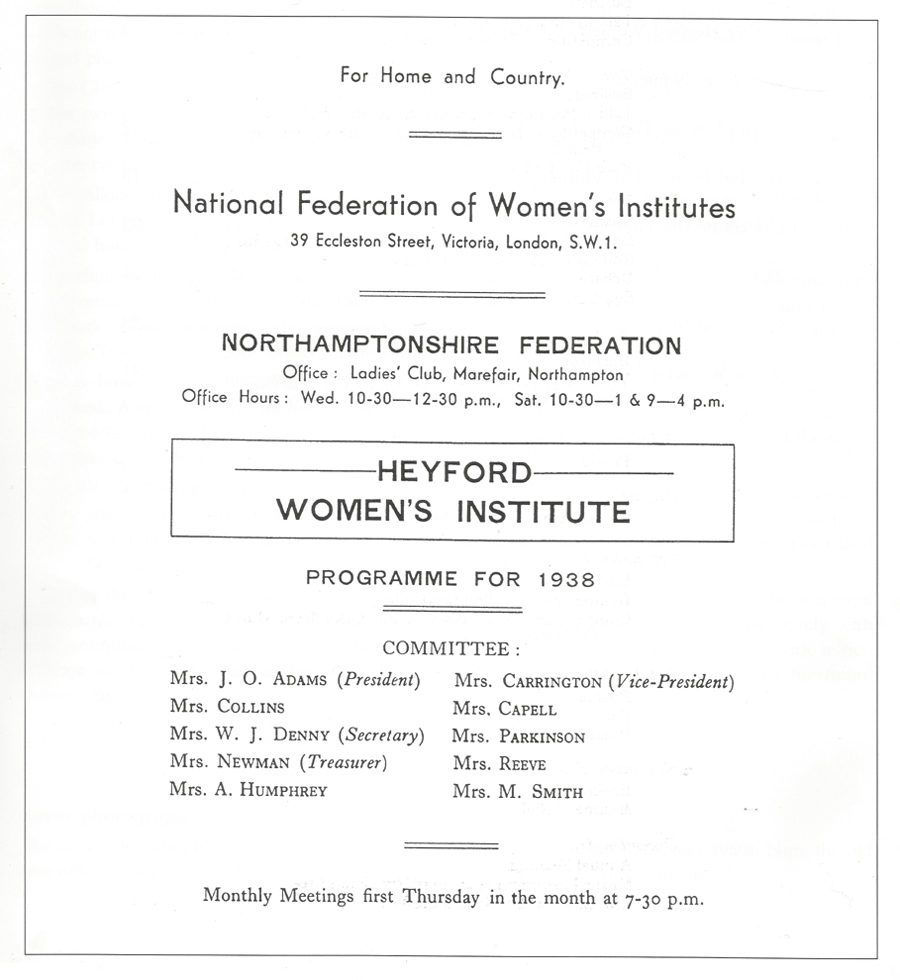
 The early years
The early years
